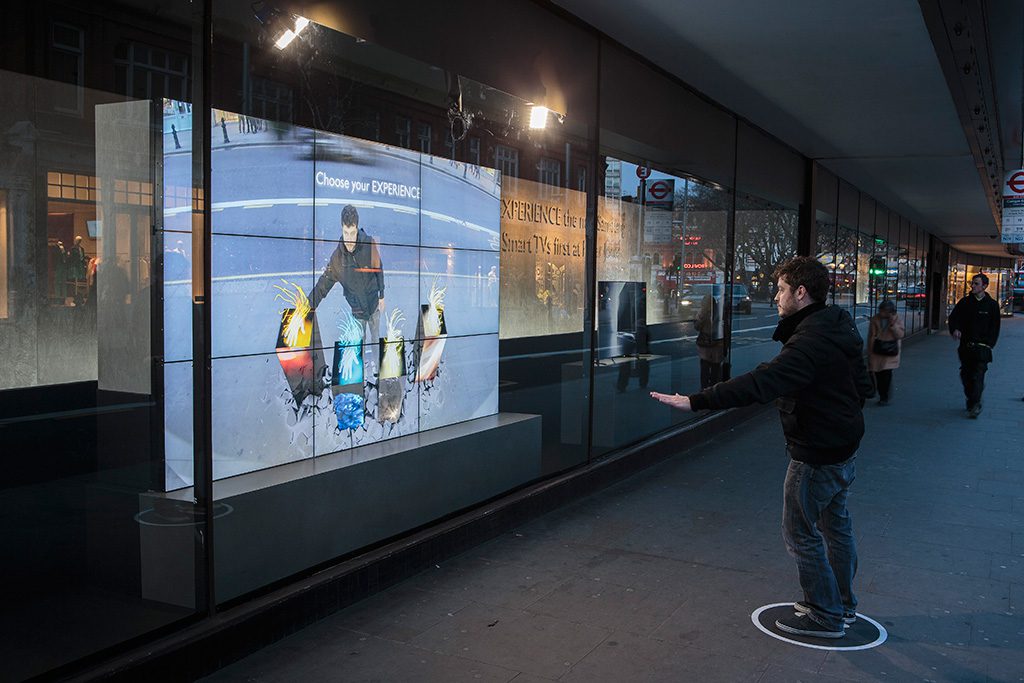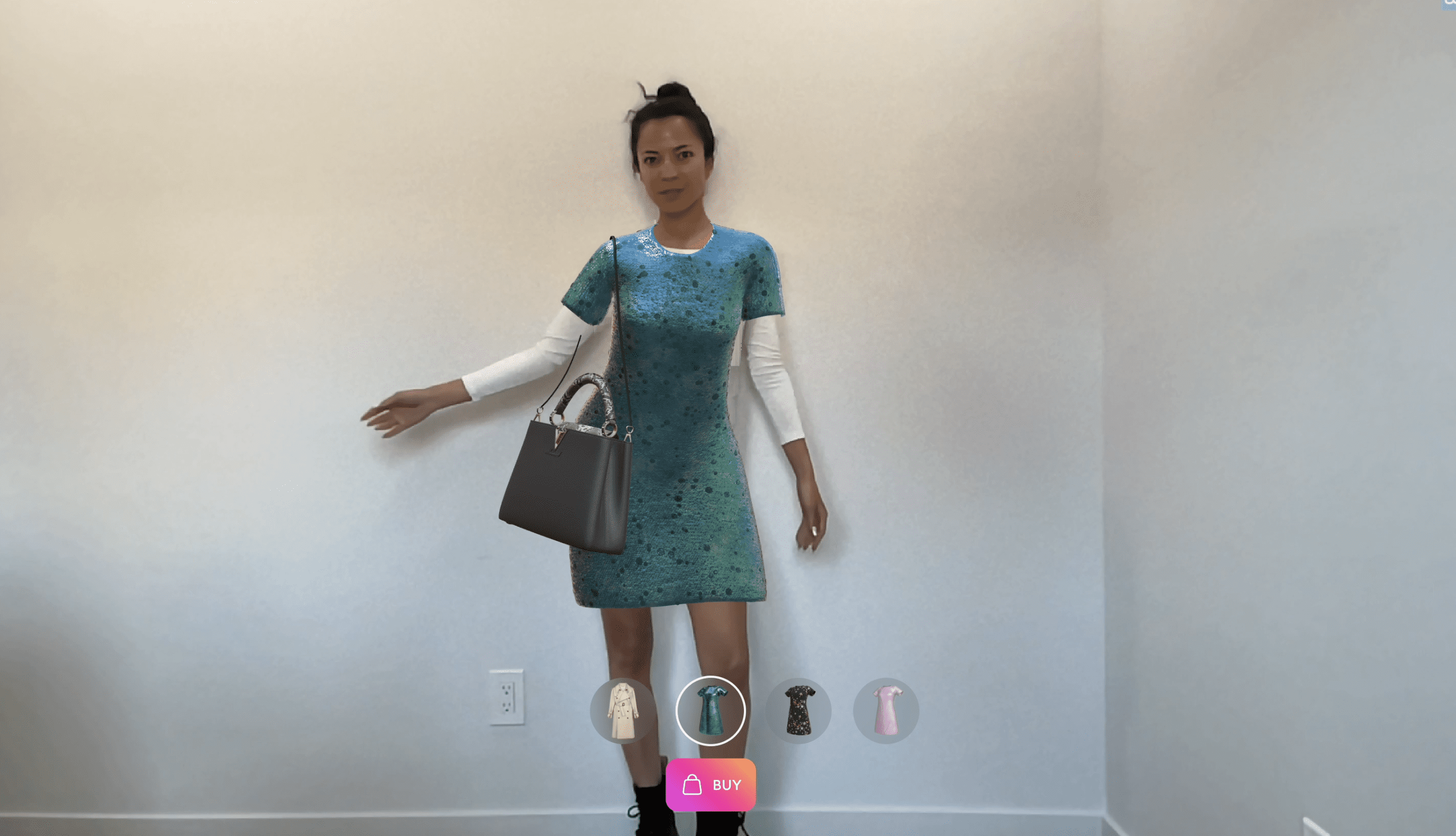As technology continues to evolve, so does the way we shop. Augmented Reality (AR) is poised to revolutionize retail, offering immersive shopping experiences that merge the digital and physical worlds. And this change is just around the corner – as noted by AR Insider, we’re starting to see an increasing number of signs that AR Shopping is gaining momentum.
Today we’ll explore how augmented reality will power a world where shoppers can make informed purchasing decisions from anywhere, without ever having to visit a physical store.
Here’s what it might look like:
AR Stylists & Multi-Product Virtual Try-On
Thanks to emerging technologies like Geenee AR full-service Virtual Try-On (VTO), we’ve entered a world where you can try on clothes, accessories and cosmetics virtually, in a variety of styles and colors, from the comfort of your own home.
Geenee AR VTO already enables shoppers to try on more than one product at once. And as AR converges more deeply with AI, it’s only a matter of time before the shopping experience evolves to include an AR stylist that provides personalized recommendations for other products. These could be items that go well with items the shopper already owns or that they’ve chosen to try on. The benefit for brands will be product discovery and the ability to upsell the customer on more than one item at once. And through the power of AR, it will be easier than ever to visualize how the entire outfit looks together.
Imagine the iconic Clueless closet, but in 3D 😀
Home Improvement, Interactive Furniture & Appliance Visualization:
AR Shopping isn’t just for fashion. It’s also super handy when it comes to purchasing large ticket items like furniture or appliances, or deciding what color to paint a room. AR lets shoppers see how a piece of furniture looks in their space (based on real-life measurements), all through the lens of a smartphone or AR glasses.
In the future, thanks to advanced headsets like the Vision Quest Pro, the AR pipeline will go both ways – not only will shoppers be able to place and visualize AR objects in their own space, but they will be able to scan any room and it’s existing furniture, to get styling tips and recommendations based on the layout of the room or items they already own.
Product tutorials, including troubleshooting, assembly and more will be available in AR. This level of interactivity and visualization eliminates guesswork and helps purchasers make more informed decisions, ultimately increasing customer satisfaction.
A Persistent Digital Overlay:
As the AR digital level blends more seamlessly with the physical world, and as headsets become more widely adopted, it’s more feasible that the idea of the Mirrorworld as outlined in the 2019 Wired article will come to pass.
In terms of how that relates to the shopping journey, AR can provide valuable guidance and information. Imagine walking into a grocery store and having AR overlays highlighting product details, ingredients, nutritional information, and even personalized recommendations based on your dietary preferences. AR can also assist you in finding products within the store, guiding you through a digital map or displaying arrows and markers to lead you to the right aisle. Furthermore, AR can unlock enhanced product information through interactive product labels, customer reviews, and ratings, empowering you to make educated choices.

Image courtesy of TRO Group
AR Overlays will make window displays immersive and shoppable, and make it easy to launch retail touchpoints from anywhere for any type of product.
Imagine a world where people wearing AR headsets can all see the same digital assets in the same physical locations, creating a shared virtual experience. From browsing virtual product displays to trying on digital outfits, the persistent digital overlay will enable everyone to witness the same virtual elements within their common physical surroundings. This will foster a new level of connection, interaction, and shared experiences, by adding a sense of universal existence to AR and transforming the way we perceive and engage with retail environments. It’s likely this will also have an effect on what consumers decide to spend their money on with increasing value placed on digital goods.
Social Shopping
Augmented Reality has the potential to take shopping back to its roots as a fundamentally social activity, reminiscent of the days when going shopping with a friend was an entire day’s adventure. With AR, shopping becomes a shared journey where friends and family can virtually join in, providing real-time opinions and suggestions. This seamless merging of online and offline shopping further bridges the gap between physical and digital realms. Through interactive features, virtual showrooms, and shared wish lists, AR transforms the online shopping experience into a dynamic and social experience, fostering connection, collaboration, and informed decision-making.
Moreover, AR brings an exciting additional dimension to the social aspect of shopping. Shoppers can attend virtual events or exclusive product launches, where they can connect with fellow shoppers, brand reps, and influencers in real-time. AR enhances the sense of community and engagement, making online shopping more immersive and enjoyable. By bringing people together, AR not only reinvents the convenience of online shopping but also revitalizes the social interactions that have long been associated with the joy of shopping. Get ready to embrace this new era where AR transforms online shopping into a genuinely engaging, social, and memorable adventure.
Partners interested in taking advantage of this new suite of AR commerce tools are encouraged to contact Geenee AR directly to learn more: Get in touch today.
